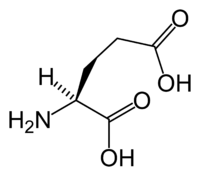
Deep molecular response in patients with chronic phase chronic myeloid leukemia treated with the plasminogen activator inhibitor‐1 inhibitor TM5614 combined with a tyrosine kinase inhibitor
Sign Up to like & getrecommendations! Published in 2022 at "Cancer Medicine"
DOI: 10.1002/cam4.5292
Abstract: We recently showed that pharmacological inhibition of plasminogen activator inhibitor‐1 (PAI‐1) activity, based on TM5614, increases cell motility and induces the detachment of hematopoietic stem cells from their niches. In this TM5614 phase II clinical… read more here.
Keywords: deep molecular; activator inhibitor; plasminogen activator; inhibitor ... See more keywords

Genetic association between plasminogen activator inhibitor‐1 rs1799889 polymorphism and venous thromboembolism: Evidence from a comprehensive meta‐analysis
Sign Up to like & getrecommendations! Published in 2019 at "Clinical Cardiology"
DOI: 10.1002/clc.23282
Abstract: Association between plasminogen activator inhibitor‐1 (PAI‐1) rs1799889 polymorphism and venous thromboembolism (VTE) were explored by many previous studies, yet the findings of these studies were conflicting. read more here.
Keywords: activator inhibitor; rs1799889 polymorphism; venous thromboembolism; polymorphism venous ... See more keywords

Tissue plasminogen activator vs heparin for locking central venous catheters between apheresis procedures
Sign Up to like & getrecommendations! Published in 2019 at "Journal of Clinical Apheresis"
DOI: 10.1002/jca.21697
Abstract: Central venous catheters (CVCs) for apheresis procedures require regular locking/flushes to maintain adequate flow rates. Literature comparing locking solutions for apheresis, where the time interval between procedures can be longer than for hemodialysis (many days… read more here.
Keywords: apheresis procedures; venous catheters; central venous; apheresis ... See more keywords

Impact of scaling and root planing on salivary and serum Plasminogen Activator Inhibitor-1 expression in patients with periodontitis with and without type 2 diabetes mellitus.
Sign Up to like & getrecommendations! Published in 2022 at "Journal of periodontology"
DOI: 10.1002/jper.22-0129
Abstract: BACKGROUND Plasminogen Activator Inhibitor-1 (PAI-1) is significantly enhanced in insulin resistance and inflammation and ascribed as a pro-inflammatory marker. This study aimed to compare and correlate salivary and serum PAI-1 and alpha 2-macroglobulin (α2MG) in… read more here.
Keywords: salivary serum; serum; plasminogen activator; activator inhibitor ... See more keywords

Detection of Protein Uptake in In Vitro Cultured Astrocytes Exemplified by the Uptake of the Serine Protease, Tissue Plasminogen Activator.
Sign Up to like & getrecommendations! Published in 2019 at "Methods in molecular biology"
DOI: 10.1007/978-1-4939-9068-9_14
Abstract: Astrocytes are heterogeneous cells of the central nervous system whose uptake of neurotransmitters and neuromodulators can influence synaptic signaling. Any malfunction in this process can lead to serious defects in synaptic transmission found in, for… read more here.
Keywords: serine protease; cultured astrocytes; vitro cultured; plasminogen activator ... See more keywords

Reduced monocyte adhesion to aortae of diabetic plasminogen activator inhibitor-1 knockout mice
Sign Up to like & getrecommendations! Published in 2017 at "Inflammation Research"
DOI: 10.1007/s00011-017-1057-z
Abstract: Objective and designTo determine the requirement of plasminogen activator inhibitor-1-knockout (PAI-1) for monocyte adhesion in animals and cells under diabetic conditions.Methods and subjectsMonocyte adhesion assay, enzyme-linked immunosorbent assay, and Western blotting were used in analyzing… read more here.
Keywords: pai; adhesion; mice; plasminogen activator ... See more keywords

Expression of urokinase-type plasminogen activator system in non-metastatic prostate cancer
Sign Up to like & getrecommendations! Published in 2019 at "World Journal of Urology"
DOI: 10.1007/s00345-019-03038-5
Abstract: To investigate the prognostic role of expression of urokinase-type plasminogen activator system members, such as urokinase-type activator (uPA), uPA-receptor (uPAR), and plasminogen activator inhibitor-1 (PAI-1), in patients treated with radical prostatectomy (RP) for prostate cancer… read more here.
Keywords: system; pai; activator; urokinase type ... See more keywords

Prostaglandin E2 receptor 3 (EP3) signaling promotes migration of cervical cancer via urokinase-type plasminogen activator receptor (uPAR)
Sign Up to like & getrecommendations! Published in 2020 at "Journal of Cancer Research and Clinical Oncology"
DOI: 10.1007/s00432-020-03272-0
Abstract: Cervical cancer metastasis results in poor prognosis and increased mortality, which is not separated from inflammatory reactions accumulated by prostaglandin E2 (PGE2). As a specific G-protein coupled PGE2 receptor, EP3 is demonstrated as a negative… read more here.
Keywords: migration cervical; cervical cancer; ep3; cancer ... See more keywords

Ischemia–Reperfusion Injury of Sciatic Nerve in Rats: Protective Role of Combination of Vitamin C with E and Tissue Plasminogen Activator
Sign Up to like & getrecommendations! Published in 2018 at "Neurochemical Research"
DOI: 10.1007/s11064-017-2465-8
Abstract: An ischemia/reperfusion injury of rat’s sciatic nerve was experimentally developed. In this model, we measured the in vivo production of superoxide radical, as a marker of oxidative stress and the occludin expression as an indicator… read more here.
Keywords: reperfusion; tissue plasminogen; ischemia; ischemia reperfusion ... See more keywords

Recombinant Tissue Plasminogen Activator-conjugated Nanoparticles Effectively Targets Thrombolysis in a Rat Model of Middle Cerebral Artery Occlusion
Sign Up to like & getrecommendations! Published in 2018 at "Current Medical Science"
DOI: 10.1007/s11596-018-1896-z
Abstract: SummaryThe efficacy and safety of recombinant tissue plasminogen activator (rtPA) need to be improved due to its low bioavailability and requirement of large dose administration. The purpose of this study was to develop a fibrin-targeted… read more here.
Keywords: plasminogen activator; tissue plasminogen; recombinant tissue; rtpa ... See more keywords

Diabetes Worsens Functional Outcomes in Young Female Rats: Comparison of Stroke Models, Tissue Plasminogen Activator Effects, and Sexes
Sign Up to like & getrecommendations! Published in 2017 at "Translational Stroke Research"
DOI: 10.1007/s12975-017-0525-7
Abstract: Diabetes worsens stroke outcome and increases the risk of hemorrhagic transformation (HT) after ischemic stroke, especially with tissue plasminogen activator (tPA) treatment. The widespread use of tPA is still limited by the fear of hemorrhagic… read more here.
Keywords: tpa; diabetes worsens; plasminogen activator; tissue plasminogen ... See more keywords